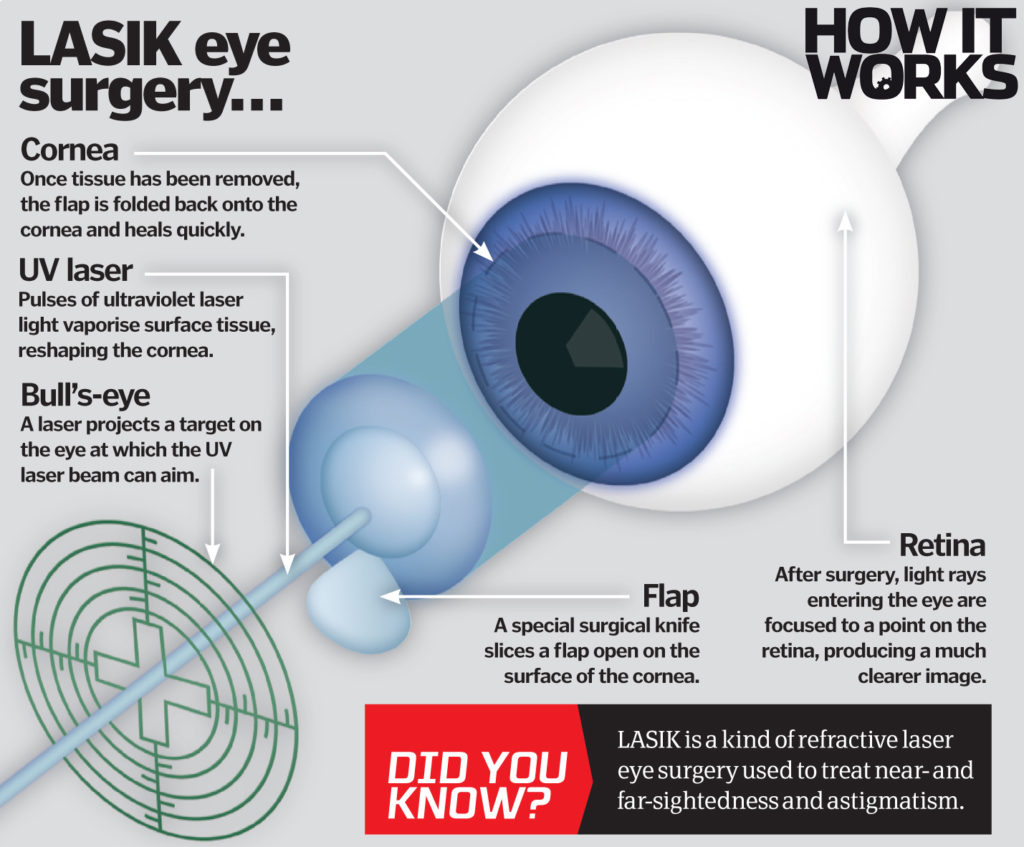How does laser eye surgery work?
People with defective eyesight can undergo laser- assisted in-situ keratomileusis (LASIK) eye surgery to correct their vision. LASIK involves using an ultraviolet laser beam to remove tissue and alter the shape of the cornea at the front of the eye.
If, say, the cornea is not perfectly spherical, light rays entering the eye won’t focus on a single point on the retina, causing diminished vision. However, by reshaping the cornea, light rays can be refracted (bent) as they pass through the cornea to focus light properly.
A computer maps the shape of the patient’s cornea before calculating exactly how much tissue needs to be removed. Using a fine knife called a microkeratome, a flap is sliced on the surface
of the cornea and folded out the way. The main laser light doesn’t penetrate the eyeball, but rather it pulses, vaporising the tissue on the surface of the cornea. The flap is then folded back and heals without the need for stitches, resulting in instantly improved vision.
The actual surgery takes a surprisingly short amount of time. From the point at which the numbing drops get popped in, the creation of a flap, reshaping and replacing it should take between 15 and 30 minutes, with full vision returning within 24 hours.

What else can laser eye surgery do?
Laser eye surgery is not limited to curing long and short-sightedness. Modern technology is also able to cure astigmatism, which happens when a person’s cornea is an irregular shape, which means light doesn’t enter the retina cleanly and is bounced about, resulting in blurred vision. The laser is able to reshape the cornea.
The cornea in a short-sighted eye is bent too much, so when light enters, the image gets formed too early and becomes blurry when things are far away. The opposite applies to long-sightedness, as the cornea isn’t bent enough and the image hasn’t been formed by the time it hits the retina.
What is 20/20 vision?
We’ve all heard about 20/20 vision, but what exactly does that mean? Well, eye specialists have worked out how tall letters have to be for a normal eye to be able to see them at 20 feet (6.1 metres). Someone with 20/20 vision can see letters of that height from 20 feet, meaning their vision is just as expected. Someone with 20/40 vision can see something at 20 feet that a person with normal vision can see at 40 feet (12.2 metres). So, the bigger the second number, the worse the vision

Post a Comment